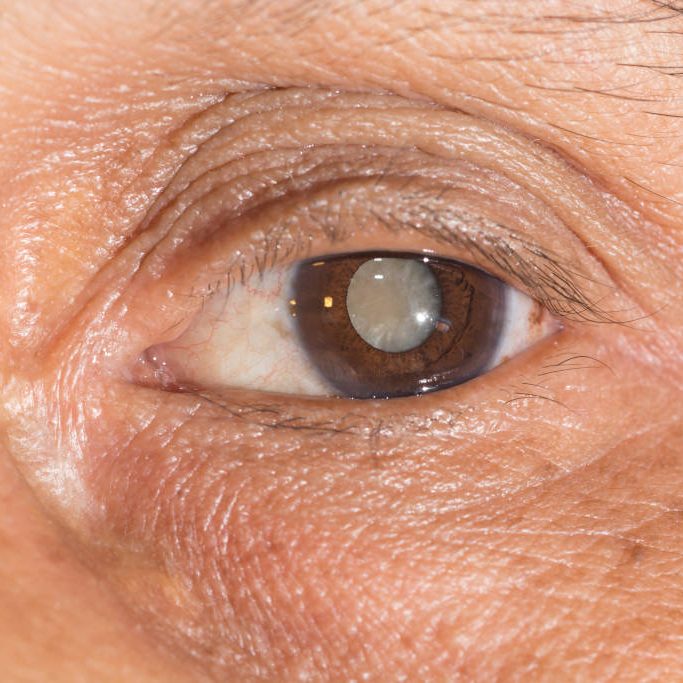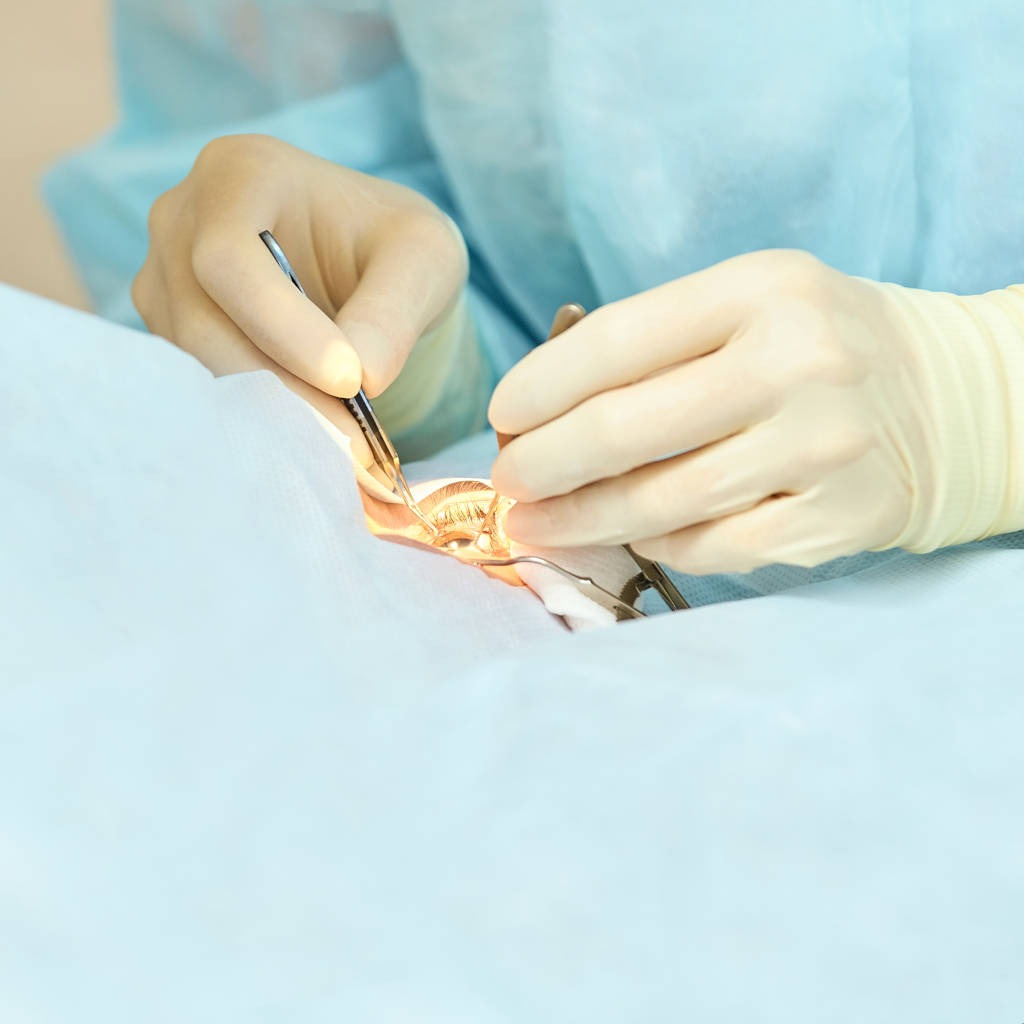GENERAL
What is a cataract?
Cataract is a condition that affects the crystalline lens. The lens helps the light focus onto the retina at the back of the eye, where images are being processed. In addition, it adjusts the focus of the image allowing us to see clearly far as well as close up.
The lens basically consists of water and proteins. Under normal circumstances, the percentage of the protein is such that the lens is maintained clear and the light passes through freely.
Over the years, gradually various proteins accumulate in some regions of the lens. Ultimately, this region or the whole lens becomes blurry and this blur is called a cataract. As time goes by, cataract may increase and obstruct vision even more.
Initially, lighting reinforcement or prescription of stronger glasses may help reduce the effects of the cataract on one’s vision.
However, when the effects on vision are such that affect or prevent everyday activities, then the cataract must be treated surgically.
Surgical management of cataract is a safe and very effective procedure that allows patients suffering from this condition benefit again from normal vision and an active life!
Symptoms
What are the symptoms of cataract?
Usually, cataract builds up slowly and is not initially noticeable. However, it affects vision gradually and consequently the patient sees as if there is a dirty window in front of him/her.
We usually discover that we suffer from cataract when:
- we have blurry vision localized at an area of the visual field or generalized
- we have difficulty seeing at night, especially while driving
- we are particularly sensitive to light, especially intense sunlight
- we need more light to help us read or for other everyday activities
- we see haloes around lights
- our perception of colors deteriorates as we see them dimmer
- we notice double vision and ghost images when we close one eye
Causes
What causes a cataract?
The exact causes of cataract have not yet been identified. However, most cases of cataract are age related. Over 50% of people above the age of 65 are affected by various degrees of cataract.
However, there are types of cataract that are due to other causes, such as:
- Secondary cataract, is a cataract that is caused as a consequence of a previous eye operation for another eye disease, such as glaucoma, retinal detachment or other general medical problems, like uncontrolled diabetes, chronic use of corticosteroid medications that can speed up cataract formation
- Traumatic cataract, which is caused by some previous eye injury
- Congenital cataract, is a cataract that appears from birth or is developing during early childhood, often in both eyes
- Post-radiation cataract, which is due to the exposure to certain types of radiation
What are the most important factors for the development of cataract?
The following factors favor the development of cataract:
- Age
- Diabetes
- Eye trauma
- Prolonged use of oral or topical corticosteroids or steroid inhalers
- Extensive exposure to sunlight or radiation
Diagnosis
How is cataract diagnosed?
In order to diagnose cataract, you may undergo a traditional vision test as well as a slit lamp examination. The latter gives the Ophthalmologist the opportunity to examine the structures of the front part of the eye, under magnification, and to spot abnormalities.
In addition, you will undergo fundoscopy, during which the Ophthalmologist uses drops in order to dilate the pupil of the eye and investigate the structures at the back of the eye (crystalline lens, vitreous and retina).
Treatment
How is the cataract treated?
At an early stage of cataract, blurry vision is treated with a stronger prescription of glasses. However, as the disease progresses and the vision deteriorates, reading and driving at night can be affected significantly and therefore the only effective treatment is surgery.
During surgery, the cloudy lens is removed through a tiny incision and replaced by a clear, artificial lens which is called intraocular lens. The operation is very quick, it is done under topical anesthetic and usually requires no stiches to close the wound.
The surgical removal of the cataract is one of the most common operations in ophthalmology and is considered to be one of the safest and most effective surgical procedures in medicine. The success rate of this operation is above 95% in the hands of experienced surgeons.
How many types of intraocular lenses exist?
There are many types of intraocular lenses that can be used depending on each patients’ circumstances and needs.
Monofocal intraocular lenses
They offer improved distance vision but patients will continue to need glasses to read.
Multifocal intraocular lenses
They can restore distance and reading vision after their implantation and have two focal points. They are usually associated with high levels of satisfaction from the patients due to spectacle independence.
The factors related to the post-op success of the implantation of these lenses include -careful patient selection
– in depth knowledge of the technology of these lenses and their optical performance -high level of surgical skills
Multifocal lenses were developed in order to boost the results of cataract operation by improving near vision as well as distance vision.
Trifocal intraocular lenses
Trifocal intraocular lenses are the most sophisticated intraocular lenses that are available today, offering clear vision at a close, intermediate or long distance, with no gaps in between as they have three focal points.
They are designed in order to permit a high degree of spectacle independence for patients who are particularly active and do not wish to have visual aids.
Studies have shown that trifocal lenses are better for patients that prefer improved intermediate vision as well as distance and reading vision.
Extended depth of focus lenses
The extended depth of focus intraocular lenses incorporate a new technology that evolved for the correction of intermediate vision for comfortable computer use after cataract operation.
These intraocular lenses provide good long and intermediate vision compared to multifocal lenses at the expense of reading vision which is not optimum.
Toric (astigmatic) intraocular lenses
Toric intraocular lenses are suitable for patients with cataract that have myopia or hyperopia in combination with astigmatism. The ideal candidate for toric intraocular lenses is interested in independence from any visual aids for long distance. It should be made clear to the patient that he/she will need correction with updated glasses for computer work and reading.
If you suffer from cataract, astigmatism and hyperopia/myopia and you choose a typical monofocal intraocular lens for your cataract operation, you will need glasses after surgery in order to be able to read or see details close up.
However, if you and your surgeon choose a multifocal intraocular lens, you can get rid of the glasses and, after the operation, be able to see reasonably well at all distances.
What is do you expect after surgery?
After your cataract operation, vision starts improving from day 1, but it takes almost 4 weeks for full recovery. Initially, patients might have hypersensitivity to light in the operated eye and mild discomfort. For that purpose, you will need to wear sun glasses after the operation.








